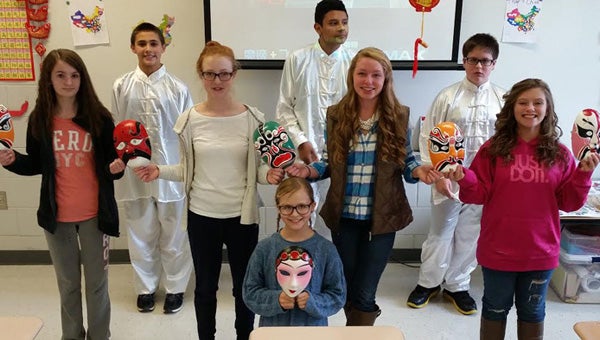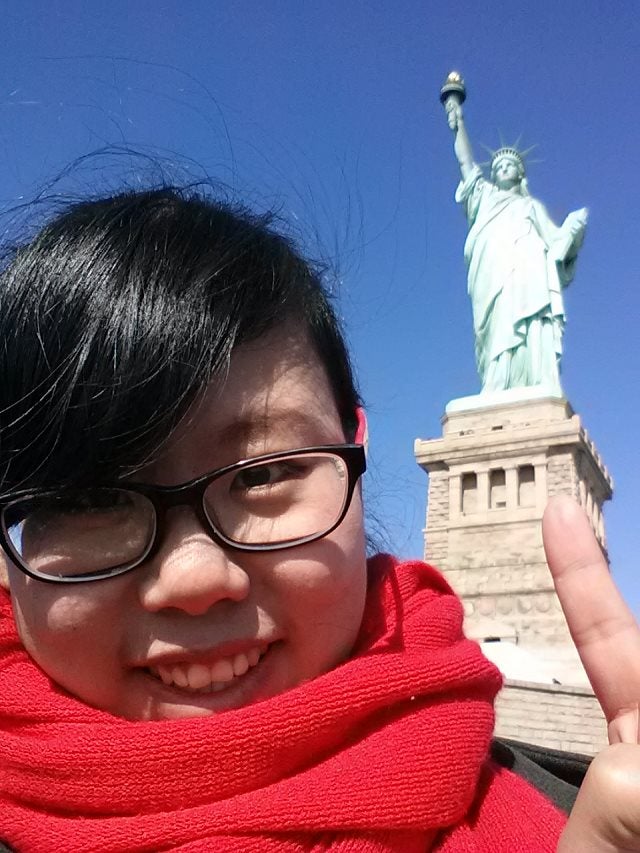Han Jun: The traveling teacher
Published 4:41 pm Tuesday, August 18, 2015
By Claire Sachse
Photographs by Claire Sachse and Han Jun
Trending
As her small but bustling class settles noisily into their seats after the bell sounds, Han Jun, or Han Lao Shi, as her students call her, meaning “teacher” in Mandarin, does something very foreign to American students.
She bows to them.
It’s how she starts each Chinese culture class and Mandarin language class that she teaches at Polk County Middle School. She has taught her students to respond by standing, and in turn, bowing to her.
Trending
This centuries-old tradition of bowing to a teacher signifies respect, said Han Jun. It is one of dozens of differences between Chinese and American classrooms that this 28-year-old teacher is learning to navigate during her three year stay in Polk County.
From Harbin, an important industrial city with a population of more than 10 million in northeast China, Han Jun arrived in Polk County in 2013 as part of a guest Chinese teacher program sponsored by the College Board and the Chinese government. She lives with the former publisher of the Tryon Daily Bulletin, Jeff Byrd, and his family in a home-stay arrangement.
So, why Polk County, out of all the possible places in America to teach?
Han Jun says that the program she works with places teachers intentionally in small, rural counties, in places where there are no Chinese teachers, or even a Chinese population to speak of. Polk County is one of less than a handful of districts in the state that has a Chinese language program.
Friends of hers, and fellow teachers, are working in neighboring South Carolina, one in the Myrtle Beach school district. They are able to see each other on occasion, most recently in Los Angeles when they attended a conference for Chinese language teachers.
Before landing in Polk County though, her concept of America was shaped by what she saw on TV, she said.
“I thought where I was going would look like New York City,” she said, laughing. “I expected tall buildings everywhere, lots of people, restaurants and night clubs.”
She shook her head ruefully and sighed. “There are no clubs here.”
Nonetheless, this young teacher is making the best of the slow pace of life in the area. She travels to Greenville and Spartanburg for shopping trips, and was able to take a longer sightseeing tour of Washington D.C. and New York City last year. She said that even though seeing New York was a dream come true, she was disappointed to learn that Times Square “isn’t really a square” and that all the images she had seen from China of the White House were really of the back of the executive mansion, not the front.
“That’s the thing I like about traveling,” said Han Jun. “You never know till you get there what something is really like…everything I learned in China may not be true. Don’t listen to others, don’t believe the TV, you need to go for yourself and see for yourself. That’s why I go teach Chinese all over the world.”
An only child, Han Jun knew from an early age that she wanted to grow up and be a teacher. She admits that a handsome teacher she had in elementary school may have influenced that career decision. Her father was a private driver, and her mother a factory manager.
With a teaching degree from Harbin Normal University, she taught middle school in her home district and then ventured to Mongolia, where from 2009-2011 she taught Chinese at a private school. There, she said, “I made big progress and this encouraged me.” After returning home for a brief time, she decided America would be her next teaching adventure.
She brought with her an array of decorations for her spacious classroom at PCMS including posters, flags, books, maps, artwork, masks, crafts, calligraphy, a qui pao (traditional woman’s dress with Mandarin collar), lanterns, and many symbols of good luck and prosperity.
Her classes are small, around eight to ten students, ensuring that everyone gets personal attention. While she has a friendly rapport with her students, Han Jun teaches in a deliberate, serious Chinese style using repetition, repetition, and more repetition. Using her hands like a conductor guiding an orchestra, Han Jun signals for her students to use rising and falling tones in the words and phrases they are learning.
When she calls on a student, they must stand up to answer. “That is a sign of respect,” said Han Jun. She drills the student until she feels they have mastered the correct pronunciation.
“In China,” she said, “we respect teachers a lot. Teachers are in a high position. Students address their teachers in the hallways. Here it is different.” She said she is adjusting to how students interact with teachers, as well as how to handle academic expectations.
“In China, students go to school from 8 a.m. to 5 or 6 p.m.,” she said, with a break midday to go home for lunch. It is common for middle and high school classes to have 40-50 students, and for the teacher to post grades publicly for everyone to see.
“Everybody sees everybody’s grades. It is a way to encourage students to learn harder,” she said. “It is very competitive for some students.” She adds that American students are as many as two years behind their Chinese counterparts in many academic subjects.
In addition to learning basic conversations (My name is…What is yours?), Han Jun’s students are also learning to recognize and write Chinese characters, identify major cities and provinces on the map, understand the significance of cultural festivals, and learn some basics of the country’s political system.
They are also using the power of music to aid in learning.
Galen Sachse, an eighth grader who has taken Mandarin for two semesters with Han Jun, said that she enjoyed learning to sing along with the Beijing Opera on YouTube, as well as love songs and other ballads.
“Singing helps you learn Chinese better. If you sing it, you’re more likely to remember it,” she said.
Field trips and food are also highlights of Han Jun’s culture and language classes. Each semester she takes her students to China Buffet in Asheville for lunch, and she also brings ingredients for dumplings and rice into class and does a cooking demonstration.
“Learning and studying about China from a book is one thing, however, having a guest teacher from China brings the study alive. Learning the customs, language, and culture from a teacher from the country gives it authenticity,” said Hank Utz, principal at PCMS.
Utz added, “One focus of our school is that we are a global society and events that happen on the other side of the world have an impact on us. Learning about customs and cultures of other countries and having an awareness of global events and the impact they have on our country is very important.”
Indeed, Han Jun’s impact on this little corner of the world will be remembered by her students for years to come. When she moves on in 2016 to her next teaching adventure, another group of middle schoolers will be lucky to have her teaching experience.
# # #
PHOTOS:
Knots:
Signifying happiness and good luck, these elaborate red knots are displayed in many locations in the classroom.
Desk:
Han Jun’s desk area is decorated with flags and fans from China.
Lantern:
Lanterns are ubiquitous in China during the Lantern Festival. An integral part of the Chinese New Year celebrations, houses and streets are decorated with elaborate lanterns on the fifteenth day of the first month of the Chinese New Year.
Han Jun in NYC 1-3 and D.C:
Han Jun fulfilled a lifelong dream of visiting New York City. She saw the Statue of Liberty, Madison Square Garden and Times Square. She also visited the White House and the Capital Building. (Photos submitted by Han Jun)
Jeremy Lin:
Han Jun is a die-hard Houston Rockets fan, and is especially fond of Jeremy Lin, a Harvard graduate whose parents are from China and whose career she has followed from China and America. Students use his photo to write the parts of the body in Chinese.
Students write names (3):
As American names don’t necessarily translate into Chinese, Han Jun issues each student an appropriate Chinese name, which they learn to pronounce and write.
Teaching Tones:
Like an orchestra conductor, Han Jun guides students in their sing-song pronunciations of the Chinese language’s five tones.
Class Field Trip:
A highlight of the semester is the field trip to China Buffet in Asheville. “It tastes good, but it’s not like home,” said Han Jun. (Photo by Han Jun)
Students learn opera:
Singing along to the Beijing Opera not only helps students gain an appreciation of Chinese culture, but it also helps them learn the language. (Photo by Han Jun)
Use the rest of the photos as filler where needed.







